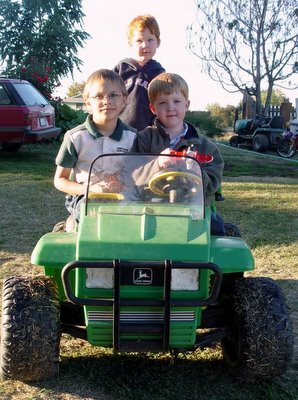When our family initially started homeschooling and developed our philosophy of education, we decided that creativity was a trait that was important to us and one that we wanted to develop in our children. According to one of my favorite books about creativity, one of the best gifts we could give our children is to provide them with ready-materials and time. It’s important to let them invent, create, and have fun. It sure makes a mess, but it’s worth it! Arts and crafts projects that don’t use pre-drawn patterns or designs allow children to create and develop according to their view of the world. Here are some ideas for some of the craft projects we did:
- Paper mache’ — create sculptures or scenes using newspaper and flour & water glue. After it dries, paint with Tempra paints and add twigs, stones, dried moss, aluminum foil or mirror rivers and lakes, etc. Great fun! We once created the Garden of Eden doing this.
- Sawdust and glue — similar to paper mache’ but using fine sawdust and Elmer’s glue instead.
- Make kites — use a plain template and paint or color designs on the kite body to make your own design or check online or the library for books and kite shapes.
- Wooden objects — children seem to enjoy crafting with wood, so we bought lots of different ‘wood’ things from the craft store and let them paint, decorate, hammer, nail, etc. to make things. Stencils are helpful in adding designs like planes, trains, etc. When homes were being built around the neighborhood, we would ask the contractor if we could take the wood scraps home. They were happy to get rid of them and they provided raw materials for some great homeschool building projects.
- 3-D art using foam shapes, twigs, dried legumes, etc. Fun to use a basic design on tag board and then glue objects on it to make a collage or work of art
- Computer art — using simple programs that teach 3D animation, computer graphics, or photo editing.
- Kits — lots of fun! Go to Michael’s or Craft Warehouse and look at all the kits that are available. Latch hook rugs, felt art, beading, etc. can all be fun for both girls and boys. Boys enjoy making latch hook rugs in an airplane theme!
- Candle-making — either dipped candles, molded candles or rolled candles using beeswax. Kids especially have fun with this project: take an aluminum pie plate and hold a regular candle up in the middle of the plate. Then pour melted, colored wax into the plate. Gently dip the plate of wax in a sink full of cold water. The hot wax will rise to the top and will ‘hug’ the candle, making a candle holder. Work as a team, as hot wax can burn.
- String art — look online for designs. A pattern looks somewhat like a dot to dot page, but without the numbers. Colored string is sewn on the page in sequences that create a woven effect and make beautiful pictures — of ships or buildings — etc.
- Watercolor — really fun and helpful if you can find someone who is willing to give a few lessons first. Use ‘cheater’ techniques to help get started with watercolor (like dot stickers that keep paint from sticking somewhere when you first coat the page, etc.). Small paintings make great Christmas gifts for family.
- Sewing. Boys love sewing machines! And so do girls. Make them earn their driver’s license first (to teach machine safety) and then give them small projects where they create designs — hot pads, pillows, and other small things are fun. Or, have them turn a t-shirt inside out and sew up the neckline and the sleeves. Turn right-side-out and stuff will pillow stuffing. Then stitch up the bottom. Sewing designs on paper is a good way to develop fine motor skills.
- Theme quilts — have them make quilt blocks on a theme (we made one with a dog theme and another with an airplane theme). Use muslin for the blocks and cut them out in 10″ squares. Using fabric crayons, permanent markers, appliques, buttons, or photo transfers (where you print off photos onto transfer paper and then iron them onto fabric) to create blocks in the selected theme. Give grandma a block to make — and one to dad — and one for mom — etc. Then have the child sew the blocks together with printed fabric (also in their theme — they have fun going to the fabric store and choosing something that strikes their fancy). The quilt top is pretty easy to make. Add a back (stitch together like a pillow case with thin, rolled padding for the middle and then turn right side out). Tie with yarn and stitch up the turn-space by hand. Easy and really valued by the child when done!
- Flower and weed arrangements. Make wicker and twig (or silk flower or dried leaf) arrangements or wall hangings. Cool glue guns, fabric ribbons (printed in themes kids like) etc. all work together to make small objects, arrangements, wall-hangings, etc. The fun is the process — and they make nice gifts for family members.
- Ceramics. We had a great time with ceramics! A ceramics shop has green-ware that they will show you/your child how to clean (using tools kind of like a dentist uses). After it’s cleaned, they will bake it for you in a kiln for a small fee. Then have child apply a glaze and take it back to the ceramics shop to be processed in the kiln again. We chose projects like gazing balls, vases with multi-colored glazes that melted and make funny patterns, chess game pieces, etc. You can also get plain clay from them — like play-dough. Statues, objects, free-form pots, etc. can all be made. When done and dried they can be fired and glazed as well.
- Model rockets and model airplanes — plastic or paper — ones that fly or are used just for decoration — all are fun and teach creativity and following directions. Allow your child to think ‘outside the box’ as they create on their own using the base kits that are available at craft stores.
- Model airplane paints work great for painting designs on stones for paper weights. Be sure to buy the type of paint that is safe to breathe!
- Legos. For art — never negate the value of Legos when it comes to developing creativity! So many skills are learned with Lego building. You might assign specific projects with Legos — a complete village or building or vehicle. Take a picture of the finished project to remember it by.
- Photography. Art principles can be taught and artistic skills developed using photography as the vehicle. In addition to taking pictures, students can start a photography blog where they post their photos. Photography can easily be used to teach "across the curriculum". Nature study, composition and writing, art principles, and human relationships are just a few subjects that can be incorporated into photo studies.
Happy creating! Children are only limited by time, resources, and their imaginations!













